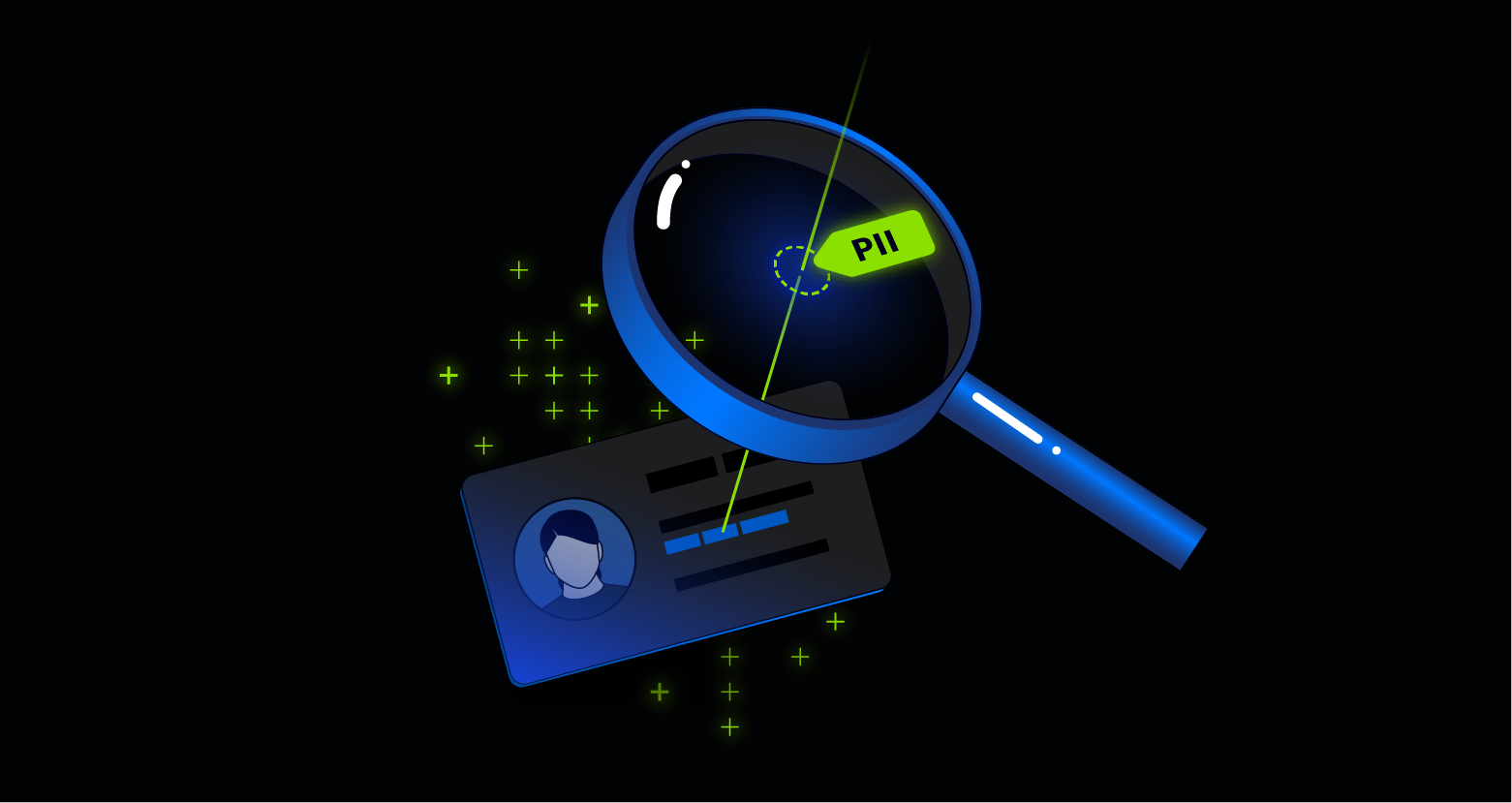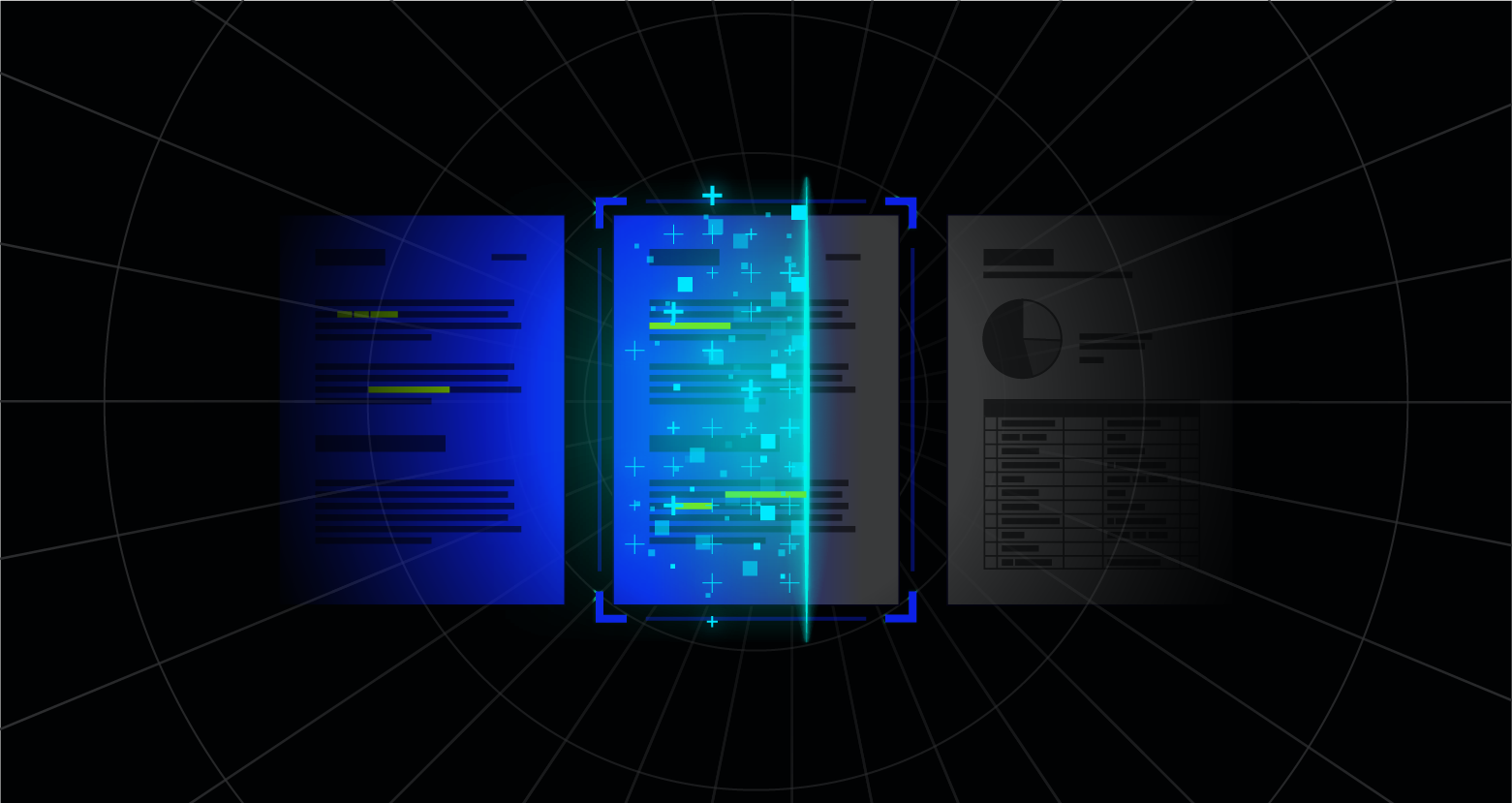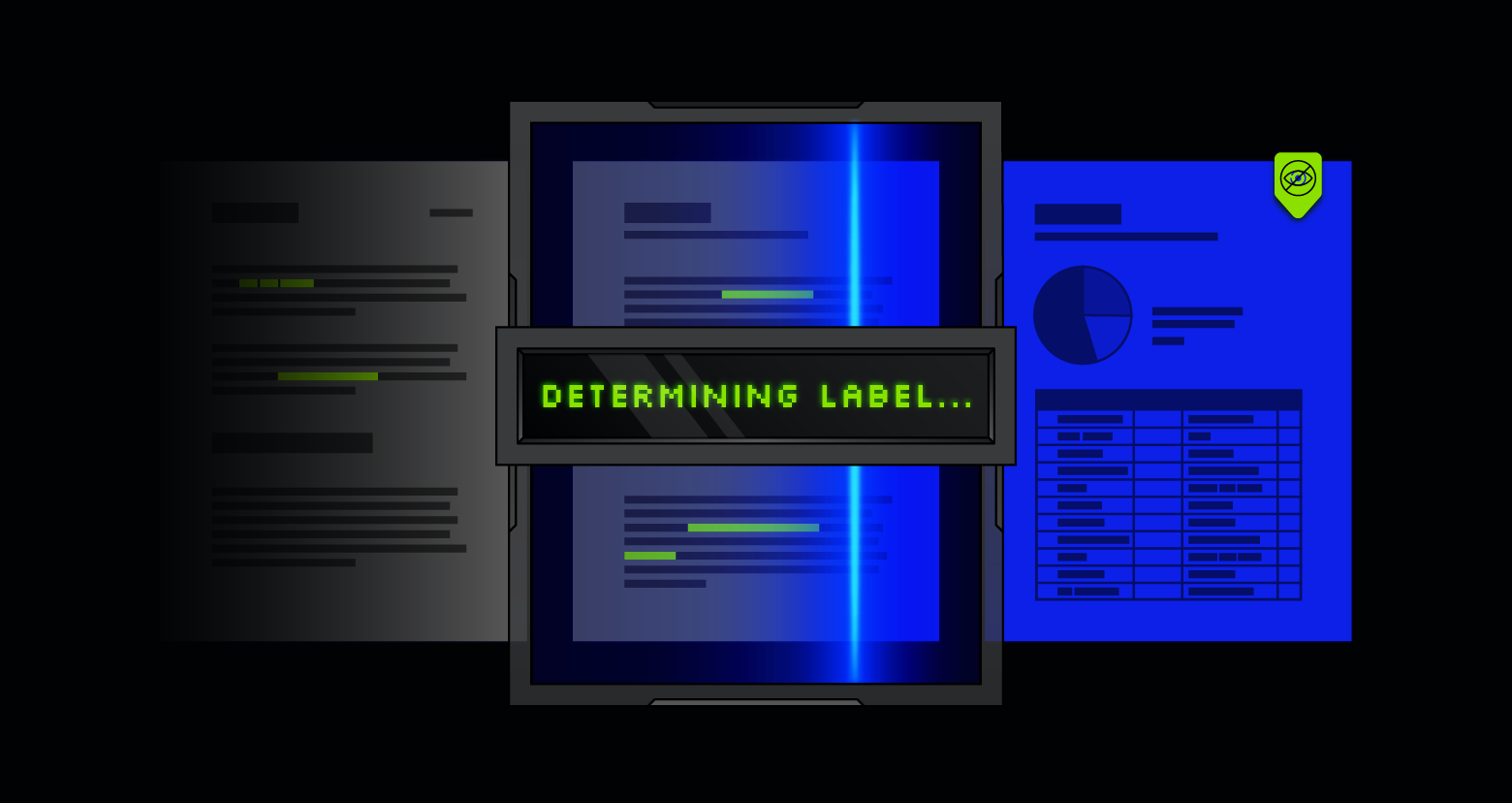Data classification is essential for a strong security posture, but many organizations struggle with “dark data” — not knowing what sensitive data they have and whether it’s exposed, in use, or under attack.
Without that insight, it’s virtually impossible to prioritize and remediate risk, detect threats, and comply with privacy regulations.
Organizations have troves of sensitive data, such as PII, PHI, and PCI, stored everywhere — in SaaS apps, emails, cloud infrastructure, databases, and on-prem storage — and without a robust data classification solution, are vulnerable to data leakage or breaches.
We designed this guide to explain the different data classification offerings in the market and why traditional classification efforts fail. We’ll share the top five essential elements to consider when choosing a data classification vendor and provide you with basic questions to ask to help you choose the best solution for your org.
Not all data classification solutions are created equal.
Many vendors claim to provide complete and scalable data discovery and classification but fall short by relying on manual methods, sampling, infrequent scans, and error-prone ML training, resulting in incomplete results.
Here are a few data classification methods to watch out for:
Manual classification
User-based classification can be difficult to enforce, and users often misclassify data or apply "public" labels to get around security controls. Manually tagging file upon file is tedious and error-prone, especially as we enter a new era of data growth powered by AI.
Machine-learning-only classification
When applied correctly, ML classification can be effective. However, without comprehensive and reliable training data, this method can have its share of limitations:
- If training data is limited, the classifier may be unable to classify new examples,
leading to incomplete results. - ML classifiers learn from the data on which they are trained. If the training data is
biased, the classifier will produce unreliable outputs. - To preserve data sovereignty, training must be done locally, which may require
significant compute resources on the customer’s infrastructure to avoid sending
sensitive content to a vendor’s central server for training.
These limitations increase the chance of false positives. First-generation ML-based methods can also be computationally expensive and, in many cases, overkill for common data types and patterns, such as Excel sheets with credit card numbers.
Using the right tool for the job is essential; in many cases, RegEx and other pattern-matching technologies outperform ML in efficiency and accuracy.
User-based classification can be difficult to enforce, and users often misclassify data or apply “public” labels to get around security controls. Manually tagging file upon file is tedious and error-prone, especially as we enter a new era of data growth powered by AI.
Structured-only classification
Another element to consider when choosing your data classification offering is the solution’s capability to process both structured and unstructured data.
Structured data has a predefined and consistent format and structure, such as tables, spreadsheets, or relational databases. Unstructured data has no variable format or structure, such as text, images, audio, video, or social media posts.
Because structured data is highly organized, automated classification tools can quickly scan, categorize, and analyze vast amounts.
However, the varied nature of unstructured data makes it difficult for algorithms to perform accurate classification because they can’t extract meaningful patterns. Unstructured data can have typos or misspellings because natural language is often unpredictable and confusing.
With organizations generating vast amounts of unstructured data daily through gen AI tools such as Microsoft Copilot, it can be challenging to process and classify that data in real time without efficient data classification algorithms in place.
Top five things to look for in a data classification vendor
Data classification is a foundational element of a strong security posture. However, many classification projects fail because the scanning engine can’t process large data sets or they produce too many false positives to be trusted.
Look for a data classification vendor with customers that match your size and scale. During your POC, ensure their classification can produce accurate and complete, contextual, and current results.
1. Scalable and efficient real-time scanning
There's a huge difference between scanning a terabyte of storage versus scanning a global bank’s 12 petabytes of data. Products that can’t scale due to latency issues result in scans that never finish or provide outdated and incomplete data classification insights that could impact key security decisions.
Factors that contribute to an engine’s ability to scale include:
- Architecture. Is the scanning engine located near the data sources? Does it use
parallel processing and incremental scanning? Does the vendor copy data to
their servers? - Network bandwidth. What is the bandwidth between the data sources and the
scanning engine? - Algorithm complexity. Does the engine use complex algorithms, such as deep
learning models, that increase the per-file scan times?
Environments with hundreds of large data stores need a distributed, multi-threaded engine that can tackle multiple systems at once without consuming too many resources. Look for a data classification solution that uses real-time incremental scanning methods, scanning only the data that has been newly created or changed since the prior scan.
Varonis is built for petabyte-scale environments.
A big reason why Varonis can scan the largest data environments is our incremental approach. After the initial scans are complete, Varonis’ data monitoring functionality tells the scanning engine which data has been newly created or changed since the last scan without the need to check the create date or modify date for each resource we scan.
Additionally, Varonis’ flexible cloud architecture allows you to dynamically add resources as your data grows. Our classification engine runs on parallelized scanning nodes in the customer’s private cloud in proximity to the data being scanned. This local collector also ensures that our customer’s sensitive data remains within their environment. Only metadata is sent to the Varonis cloud.
2. Accurate classification
Accuracy is the most crucial element of data classification; unreliable data discovery and analysis undermines data loss prevention policies, CASB functionality, threat detection, and more.
According to Gartner, more than 35% of DLP projects fail because of poor data classification and discovery. DLP effectiveness depends on addressing these challenges and ensuring data classification is accurate.
Many classification tools rely on third-party libraries or open-source packages of untested and unvalidated regular expressions, dictionaries, and patterns to find sensitive data. It’s important to test the accuracy during an evaluation by using test data from places like dlptest.com.
As mentioned above, trainable classifiers can produce inaccurate results due to insufficient or biased training data, concept drift, overfitting, and underfitting. The quality of ML-based classification can vary widely depending on the team responsible for the implementation.
Varonis generates accurate classification results.
Varonis is considered the most reliable data classification engine worldwide and received the highest possible score for data classification in the Forrester Wave™ for Data Security Platforms.
Most of our 8,000-plus customers use our engine with minimal customization to find regulated data. Our capabilities include pre-built databases of known valid values, proximity-matching, algorithmic verification, and more. Confirm findings with file analysis to see exactly where the classification result appears within a document.
3. Complete results
If your org runs scans on vast amounts of data, your solution needs to cover everything reliably. If the scan can’t finish (for example, because it can’t scale for the above reasons), you end up with only half the picture and half the protection.
Many data classification tools cannot support common data types. Incorrect inferences can result in data being misclassified, which can lead to sensitive data exfiltration or the opposite — users being blocked from sharing non-sensitive data.
Sampling can be effective for databases with well-defined schemas but typically doesn’t work for large file stores like NAS arrays or object stores like AWS S3 and Azure Blob. Unlike a database, you can’t assume that just because you scanned 2TB of an S3 account and found no sensitive content, the other 500TB of data is not sensitive.
Many data classification tools are not able to support common data types. Verify that your classification vendor can open and scan data types important to you (e.g., CAD drawings, office documents, databases, images). A robust classification solution should be able to scan and classify all your data, regardless of the type, format, location, or platform.

Varonis' data classification is complete.
Varonis automatically classifies and labels cloud and on-prem structured, semi-structured, and unstructured data. Our coverage spans virtually every data type and location, giving CISOs and security teams a central command center to protect data across SaaS, IaaS, databases, on-prem file shares, and hybrid NAS devices. As regulations update, our SaaS platform provides immediate access to the latest classification policies without timely upgrades, package downloads, or patches.
4. Contextual results
Classifying data, while an important first step, is typically insufficient for securing critical data. You need additional context, like exposure and activity, to help you achieve your security goals. Otherwise, it’s like going from one problem (not knowing where your important data is) to having millions of problems — heaps of identified sensitive files with no clear next steps.
- Exposure: Organizations are built on collaboration and sharing, which often leads to convenience trumping data security. Understanding your exposure and knowing who can access data — and limiting that access in a way that does not stifle productivity — is key to mitigating risk.
- Activity: Companies need the ability to detect and respond to unusual behavior, identify who is accessing data, and safely eliminate excessive access without impacting business continuity.
Additional context about data exposure and activity can help organizations detect and remediate abnormal access.
Varonis goes wide and deep.
Varonis has over 150 patents, many of which combine metadata to help answer critical data security questions such as, “Which data is sensitive, overexposed, and stale?” or “What sensitive data can a user access across our entire environment?”
Our unique metadata analysis also allows us to automate remediation at scale. For example, because we know whether permissions are being used, we can easily revoke excessive permissions with an assurance that no business process will break.
5. Current results
It’s vital that your data classification solution keeps a real-time audit trail of activity as data changes and grows over time. Some tools use periodic or scheduled scans, which only scan your data at fixed intervals, and some tools only scan specific data stores, which makes it hard to gather information across your environment. Without a unified platform, your information is incohesive and strewn across interfaces, leading to discrepancies and detrimental downstream DLP efforts.
Varonis' data classification is always current.
Varonis real-time classification results are always current because our auditing activity detects files created or changed; there is no need to re-scan every file or check the last modified date. You can also control the scope of what you classify or create customized scan templates for faster results and lower processing loads.
What does it mean to truly "cover" a platform?
Data classification is the first step in any DSPM approach. But to secure your sensitive information, you need to know who can access it and what they do with it. Varonis goes beyond classification by incorporating labeling, access intelligence, automated remediation, and activity monitoring. Mitigate risk by limiting access to only those who need it, discover and eliminate stale or redundant data, and gain insight into the location and usage of data.
There are hundreds of questions you can ask potential data classification vendors, but it all comes down to how they incorporate the three dimensions of data security: sensitivity, permissions, and activity.
If they struggle to address any of those facets, you’ll want to consider whether the solution can help you accomplish your security goals.
- Is our data being used? By whom? Are there any abnormal access patterns that
could indicate compromise? - Is our sensitive data labeled correctly so that our downstream DLP controls
work? - Is sensitive data exposed publicly? To all employees? To people who don’t
require access? - Is our sensitive data stored in unsanctioned repositories? Are we in violation of
any data residency requirements? - What is the likelihood that a compromised user could exfiltrate sensitive data?
- What data is stale and can be archived or deleted?
- What does it mean to truly “cover”
a platform?
Go beyond classification with Varonis.
Labeling
Many organizations depend on sensitivity labels to enforce DLP policies, apply encryption, and broadly prevent data leaks. In practice, however, getting labels to work is difficult, especially if you rely on humans to apply sensitivity labels. As humans create data, labeling frequently lags or becomes outdated.
The efficacy of label-based data protection will surely degrade with AI generating orders of magnitude more data requiring accurate and auto-updating labels. Your solution’s ability to label data effectively and accurately is critical for DLP enforcement, compliance audits, and other security use cases.
Varonis provides accurate data labeling.
Varonis automatically labels sensitive and regulated data uniformly across your cloud or on-premises environment. Additionally, our platform automatically updates file labels if your classification policies change, the file's contents no longer match the policy, or if files were manually mislabeled. Varonis also compares existing labels with our classification results and identifies misclassified data.
Automated remediation
Varonis automatically analyzes data access across your business and intelligently decides who needs access to what data, continually reducing your blast radius without human input or risk to the business.
CISOs don’t need another product to tell them they have problems without offering an automated way to fix them. Look for a data classification solution that goes beyond visibility and automatically fixes problems on the data platforms it's monitoring.
Varonis continuously and automatically remediates data security risks.
Varonis automatically analyzes data access across your business and intelligently decides who needs access to what data, continually reducing your blast radius without human input or risk to the business.
Real-time behavioral alerts and incident response
Data is the target of almost every cyberattack and insider threat.
As such, your security solution must also be able to monitor data access, alert you of abnormal behavior, and stop threats in real time. It’s a red flag if your security vendor lacks an incident response function and a cybersecurity research team that regularly publishes data-centric threat research.
Varonis stops data breaches.
Varonis monitors data activity in real time, giving you a complete, searchable audit trail of events across your cloud and on-prem data. Hundreds of expert-built threat models automatically detect anomalies, alerting you of unusual file access activity, email send/receive actions, permissions changes, geo-hopping, and much more.
Automate responses to stop threats before they take hold. Varonis also offers Managed Data Detection and Response (MDDR), the industry's first managed service dedicated to stopping threats at the data level.
Ready to secure your data?
The right data classification vendor can help your company prevent breaches, investigate incidents quickly, and ensure you're meeting increasingly stringent regulations. By focusing on coverage, accuracy, and scale, the Varonis Data Security Platform can help you overcome your biggest security risks with virtually no manual effort.
- Automatically discover and classify all sensitive content
- Automatically enforce least privilege permissions to reduce your exposure
- Automatically ensure correctly applied labels
- Continuously monitor sensitive data and respond to abnormal behavior
We hope this guide helps you find a data classification vendor that can drive the
outcomes you’re looking for! If you have any questions, don’t hesitate to contact us.
What should I do now?
Below are three ways you can continue your journey to reduce data risk at your company:
Schedule a demo with us to see Varonis in action. We'll personalize the session to your org's data security needs and answer any questions.
See a sample of our Data Risk Assessment and learn the risks that could be lingering in your environment. Varonis' DRA is completely free and offers a clear path to automated remediation.
Follow us on LinkedIn, YouTube, and X (Twitter) for bite-sized insights on all things data security, including DSPM, threat detection, AI security, and more.








